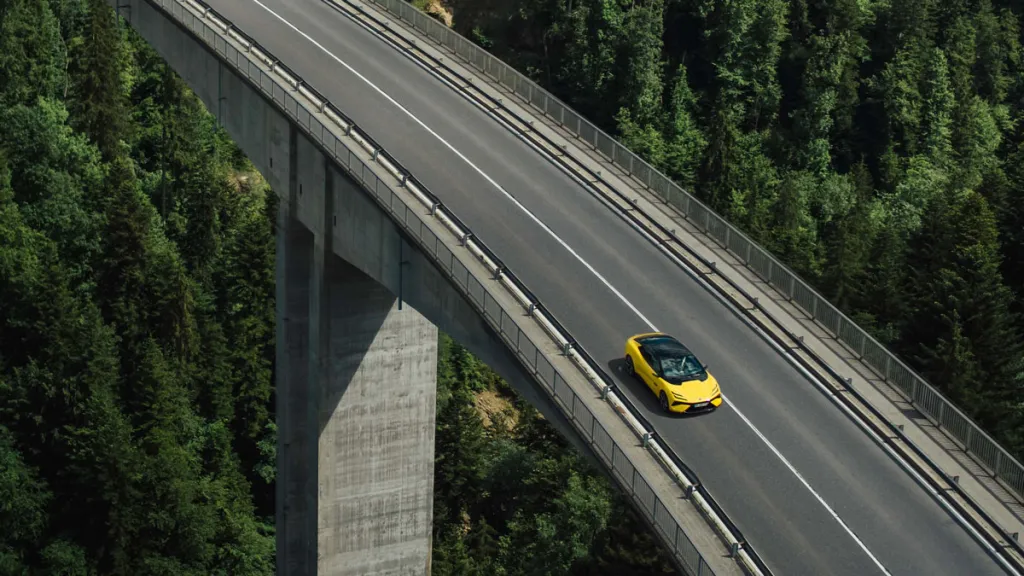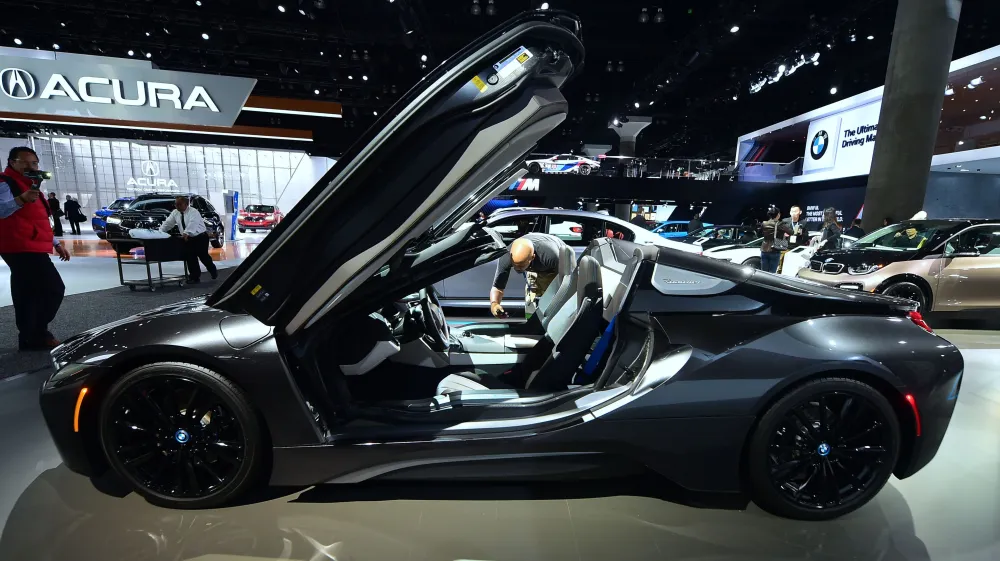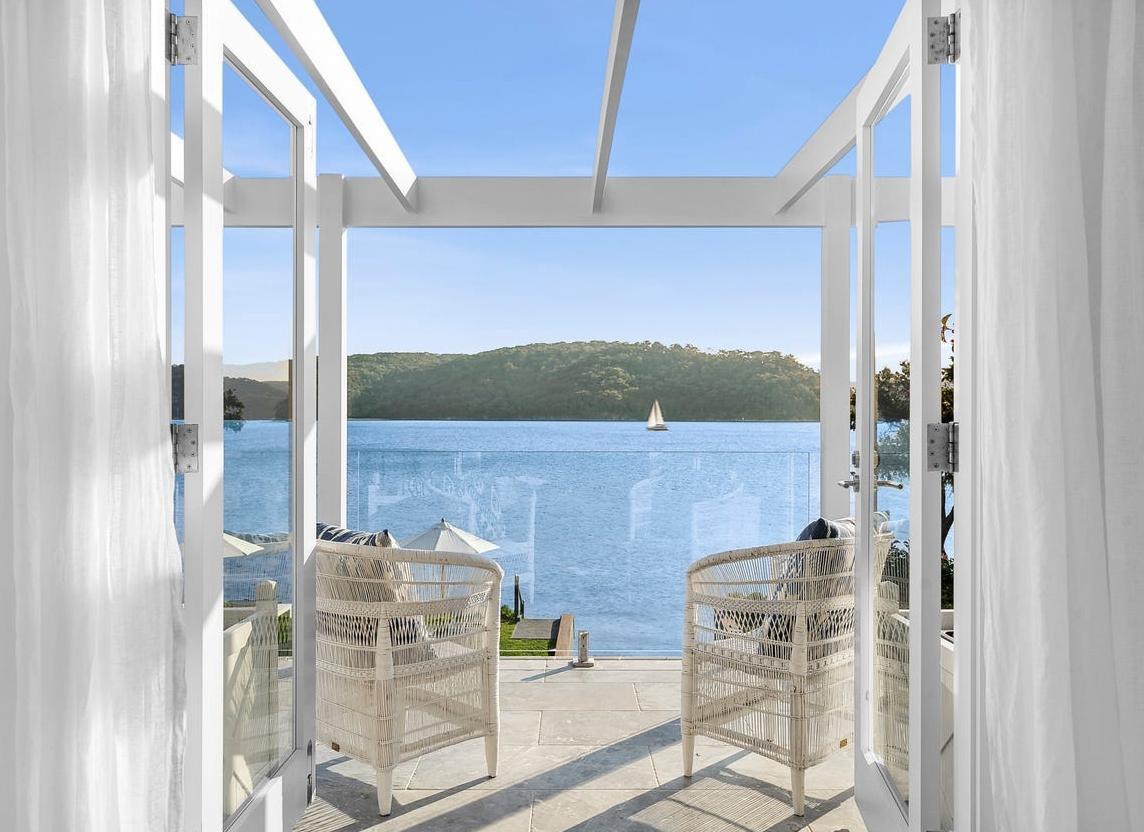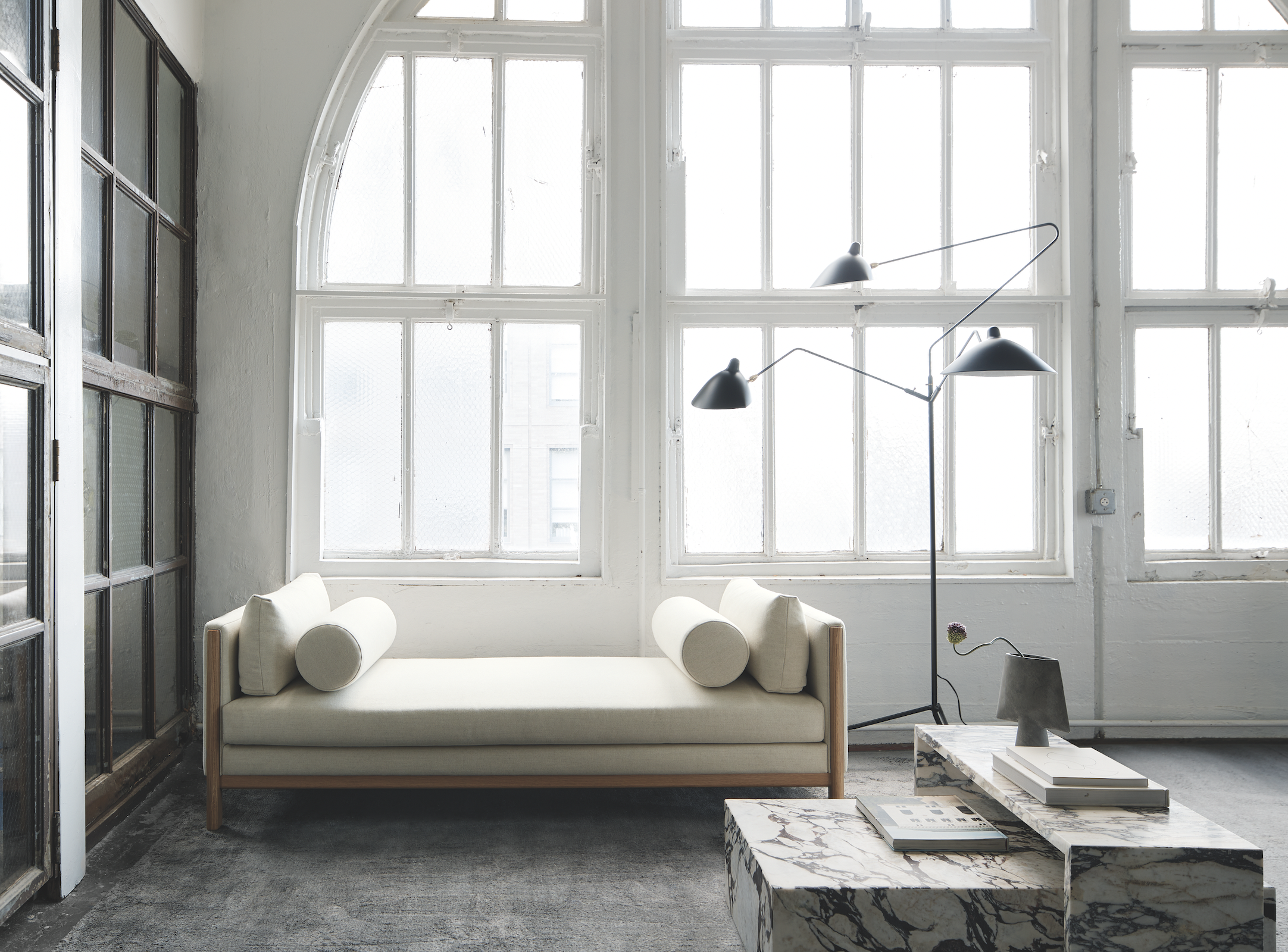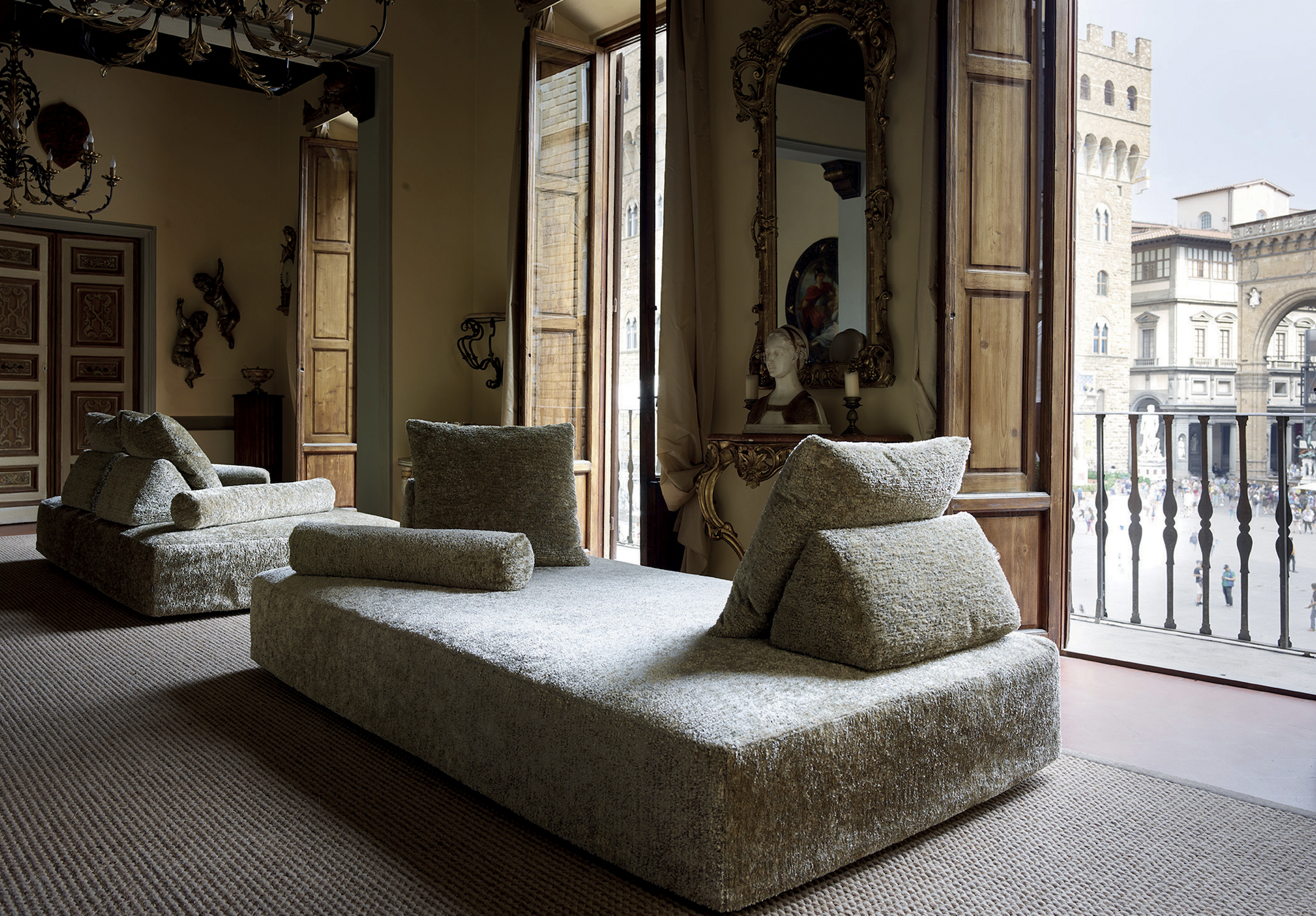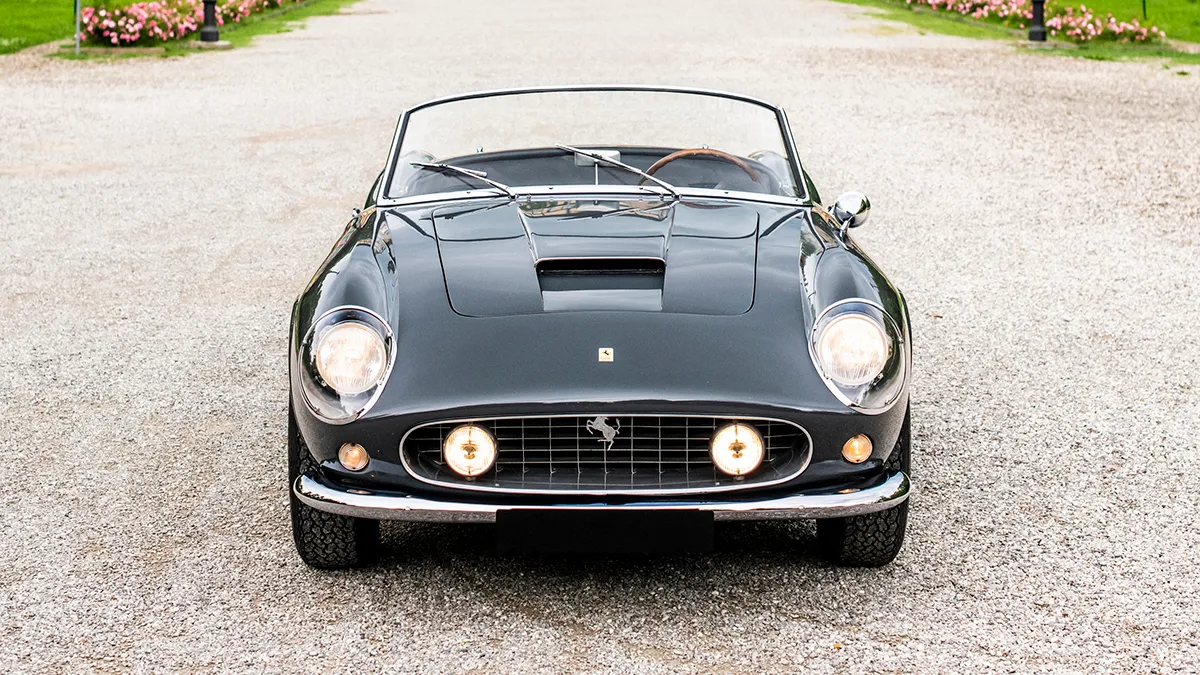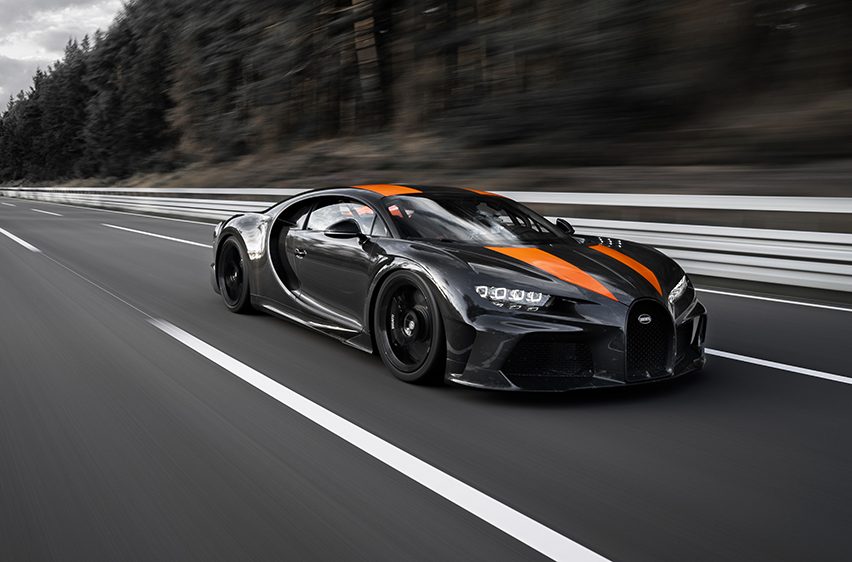
The World’s 25 Fastest Production Cars
When car companies compete for top-speed bragging rights, the world wins.
Related articles
The first production vehicle to crack 320km/h was the Ferrari F40. The year was 1987; immediately after that Italian stallion’s speedometer registered 321km/h, the race to enter the 400km/h club began. In 2019, amid fervent competition between Koenigsegg, Hennessey and Bugatti, the Chiron Super Sport bested the others by a horseshoed nose, achieving a staggering 490.3km/h. In early 2020, a bevy of new hypercars was announced—several promising at least 480km/h. Then, this year, SSC North America turned a claim into reality, cementing the SSC Tuatara’s spot at number two—at least for now. So, we’re updating our list of the fastest cars in the world and expanding it to show more wheeled lightning. (Three quick editor’s notes: our sole criterion is top speed, our floor for consideration is at least 350km/h and unproven manufacturer claims are denoted.)
Porsche 918 Spyder — 350km/h

The Porsche 918 Spyder Courtesy of Porsche AG.
Porsche did some light sandbagging when it claimed the top speed on its 918 model was 344km/h. In 2018, one 918 Spyder was recorded clocking 351km/h. Still the fastest production car the Stuttgart marque has produced, the hybrid power train features a naturally aspirated 4.6-litre V-8, good for 446kW, and twin electric motors that contribute another 210kW, bringing the sum to 656kW.
Ferrari Enzo — 350km/h

The Ferrari Enzo that sold last year through RM Sotheby’s. Karissa Hosek, courtesy of RM Sotheby’s.
Only 400 of these carbon-fibre beauts emerged from Maranello, all singing the glorious, throaty song of a naturally aspirated 6.0-liter V-12. With 484kW lurking in that mill, and a lithe-for-the-time curb weight of 1360kg, the Enzo shredded the quarter-mile in 11 seconds flat, with the ability to continue on to 350km/h, given enough asphalt.
Aston Martin One-77 — 354km/h

The Aston Martin One-77. Courtesy of Aston Martin Lagonda Global Holdings PLC.
This limited-edition coupe from Aston Martin was capped at 77 units, though after an accident in Asia, only 76 examples remain. Beneath the long hood lies a 7.3-litre V-12 from Cosworth, good for 559KW. That propels the aluminum-and-carbon-fibre chassis from a dead stop to 97km/h in 3.5 seconds. A series of tests by Aston showed that its steed was capable of 354km/h back in 2009.
Rimac Concept_One — 355km/h

Photo: Courtesy Rimac
This gorgeous stunner hails from Croatia, the first road-legal production vehicle to emerge from the brain of Mate Rimac. The fully electric hypercar employs four motors that, in concert, make 913kW and 1600Nm of torque. Less than 10 examples were produced, including the one that Richard Hammond famously crashed on camera, so when one came up for sale in New York City in September of 2020 for approx. $2.1 million, it was a big deal.
Pagani Huayra — 383km/h

Pagani Huayra BC Macchina Volante Shutterstock
The successor to the game-changing Zonda, the Huayra comes from Italian speed master Horacio Pagani and is named after Huayra-tata, a Quechua wind god. Fitting, considering the 536kW coming from a twin-turbocharged Mercedes-AMG V-12. A seven-speed single-clutch gearbox puts down the power while delivering chunky, whiplash-inducing shifts, allowing you to scream from zero to 97km/h in a mere 2.8 seconds.
Pagani Huayra BC Roadster — 386km/h (Estimated)

The Pagani Huayra BC Roadster. Courtesy of Pagani Automobili S.p.A.
The “BC” in the moniker of this entry is an homage to Benny Caiola, an Italian-born businessman who became a New York real estate titan. Caiola bought the first Zonda off Horatio Pagani himself, subsequently becoming a dear friend. This iteration of the open-top Huayra launched in 2019, after Pagani left the Geneva International Motor Show with five unsolicited deposits for a more aggressive version of the Huayra Roadster. The resulting machine features a new Mercedes-AMG twin-turbo V-12, tweaked to be about seven per cent more powerful than the coupe version of the BC. The 590kW output should be more than ample to rocket the approx. $4.6 million open-top hypercar to 386km/h.
McLaren F1 — 386.4km/h

McLaren F1 Photo: Courtesy of McLaren
The iconic three-seater from McLaren was a revolutionary model from the brilliant mind of designer Gordon Murray. Built in 1993, it was the first carbon-fibre-bodied production car ever built, and featured a 6.1-litre V-12 from BMW that was good for 460.8kW and 640Nm of torque. For the then-expensive, now-bargain price of approx. $920,000, you were rewarded with blistering speed: zero to 97km/h in 3.2 seconds and zero to 160km/h required just 6.3 seconds. Simply mental performance figures, especially when you factor in that the engine is naturally aspirated. When it officially set the world speed record back in 1998, the 386.4km/h run remained top dog until 2005, when the Koenigsegg CCR bested it by all of 1.6km/h.
Saleen S7 Twin Turbo — 399km/h

2005 Saleen S7 Simon Davison/Flickr.
Steve Saleen set out to build a Bugatti Veyron challenger, and this street-legal race car was the result. One of the first American mid-engined performance machines ever crafted, the Saleen S7 was 100 percent hand-built. A heavily-tweaked 7.0-litre twin-turbo Ford 351 Windsor Small Block gets bored and stroked, bestowing the handsome coupe with 559km/h.
Koenigsegg CCXR — 400km/h

Koenigsegg CCXR Courtesy of Koenigsegg Automotive AB.
The CCXR uses the same 4.7-litre twin-turbo V-8 mill as the CCX, but the Swedish company modded the power plant to run on E85 race gas, which shot the power from 593kW up to 748kW be exact. Given the CCXR’s upgraded aerodynamics package and engine, it would be interesting to see how it performs in a proper top-speed run that’s in a straight line and not on a circular track (which is how the aforementioned CCR ran).
Koenigsegg Gemera — 400km/h (Claimed)

Koenigsegg Gemera Courtesy of Koenigsegg Automotive AB.
The second hypercar from the Swedish automotive wizards to grace our list is referred to as a “mega GT” by founder Christian von Koenigsegg. That’s because it’s packing 1267kW, 3500Nm of torque and has four seats, each of which was designed to hold an actual human. (Thoughtfully, there’s room for the storage of one carry-on suitcase per passenger.) The sprint to 97km/h is over in 1.9 seconds—faster than you can read this sentence.
Tesla Roadster — 400km/h+ (Claimed)

Tesla Roadster Photo: Courtesy Tesla.
Elon Musk launched Tesla with a coupe, so this electric Roadster is a fitting return to his roots. Only he’s turned everything up to 11. Tesla claims its 200 kWh battery pack will provide up to 997km of range, while a trio of motors will propel the approx. $300,000-plus four-seat supercar to 97km/h in 1.9 seconds. With that quickness, the quarter-mile is in your rearview in just 8.8 seconds.
Aston Martin Valkyrie — 402km/h (Claimed)

Aston Martin Valkyrie Courtesy of Aston Martin Lagonda Global Holdings PLC.
When engineers from Aston Martin and Red Bull Racing put their heads together, the world benefits. The Valkyrie, or AM-RB 001 as it was known in development, is a fantastically wild-looking hypercar. Behind your seat, a 6.5-litre Cosworth V-12 churns out 865kW, more than enough to compress your innards during the 2.3 seconds it takes to hammer to 97km/h. And it has recently been spotted road-testing.
McLaren Speedtail — 402km/h

McLaren Speedtail Courtesy of McLaren Automotive Limited.
The rear-wheel-drive Speedtail employs a hybrid system good for 772kW, and its sleek shape and lightweight carbon-fibre construction is tailor-made for its top speed of 402km/h. McLaren claims it’ll take only 12.8 seconds to go from a dead stop to 300km/h, which is an eye-watering stat.
Bugatti Veyron — 407.2km/h

Bugatti Veyron Courtesy of Bugatti Automobiles S.A.S.
When Bugatti launched the Veyron in 2005, it represented a number of firsts, including fastest, most powerful and most expensive car available at the time. Behind your head, an enormous 8.0-litre W-16 engine generates746kW and a staggering 1248Nm of torque. That’ll rocket you to 97km/h in 2.5 seconds, 200km/h in 7.3 seconds, 300km/h in 16.7 seconds and, if you’ve got the guts, all the way to a top speed of 407km/h.
SSC Ultimate Aero TT— 412.1km/h

SSC Ultimate Aero TT Courtesy of Wikipedia.
SSC North America’s 2007 Ultimate Aero TT has a Guinness Book of Records–verified top speed of 412.28km/h. That record has since been broken by others, and now belongs to its successor, the SSC Tuatara. But that doesn’t take anything away from this fully carbon-fibre behemoth. Power comes from a twin-turbocharged Corvette C5R V-8 that’s tuned to produce more than 820kW and 1483Nm of torque. The rip to 97km/h is 2.7 seconds, and the task of stopping the land missile is aided by twin air brakes that pop up from the rear wings.
Rimac Concept Two — 415km/h (Claimed)

Rimac Concept Two Courtesy of Rimac Automobill.
The second model from the Croatian electric hypercar manufacturer is aptly named Concept Two (also known as C_Two) and comes with a lot of boastful claims. The 1407kW coupe purportedly hits 97km/h from a standstill in 1.85 seconds, has a maximum range of 646km and hustled around the Nürburgring twice without a dip in performance.
Bugatti Chiron — 420km/h

Bugatti Chiron Sport Edition 110 Years Courtesy of Bugatti Automobiles S.A.S.
While Bugatti bosses said they wouldn’t do a top-speed run (and instead just did a zero-to-400km/h-to-zero sprint), one owner hit up Johnny Bohmer Proving Grounds to see the 1118 kW Chiron realise its limited top speed of 420km/h. The speedometer goes up to 500km/h, though, so undoubtedly the 2018 Chiron can go much faster, but the folks at Bugatti cite tyre limitations as the reason for the factory-installed governor.
Bugatti Veyron Super Sport — 430.98km/h

Bugatti Veyron Courtesy of Bugatti Automobiles S.A.S.
Here’s yet another Bugatti, this one built back in 2010 for the sole purpose of securing the accolade of fastest production car ever built. And the Veyron Super Sport achieved it, per Guinness. From the same W-12 power plant, engineers managed to eke out an additional 134kW, bringing the grand total to 882kW. To unlock the potential for max speed, you’ll need a second key that’ll give unfettered access to the engine.
Hennessey Venom GT — 435.1km/h

Hennessey Venom Courtesy of Hennessey Performance Engineering.
John Hennessey’s eponymously named performance group is obsessed with power and speed, evidenced by shoehorning as much oomph as it can into production cars from other manufacturers. Then Hennessey built his own supercar in 2014, powered by a 7.0-litre twin-turbo GM V-8 packing 927kW. The Venom reached 435.1km/h at the Kennedy Space Center’s 5.1km landing strip, but only in one direction. Since both directions are required for a record-holding run, in addition to a production volume of 30 or more cars (only 13 Venoms have been sold), the Hennessey doesn’t qualify for official record books. But still, the beast has surpassed 434km/h and that’s impressive as hell.
Koenigsegg Agera RS — 447.07km/h

Koenigsegg Agera Courtesy of Koenigsegg Automotive AB.
In November of 2017, a Koenigsegg Agera RS, running E85 fuel (meaning it was getting 1014kW), was driven by a factory driver to a two-way average speed of 447.07km/h on an 17.7km strip of closed road in Nevada. The car, owned by a customer who suggested the feat, actually hit 457km/h during the record attempt, which is staggering. At the time, it also nabbed the fastest zero-to-400km/h-to-zero metric (33.2 seconds), the highest average speed during the flying kilometre (431km/h) and for the flying mile on a public road (444.6km/h).
Hennessey Venom F5 — 482km/h+ (Claimed)

A production version of the Hennessey Venom F5 hypercar. Dean Smith, courtesy of Hennessey Performance Engineering.
Hennessey Performance Engineering’s Venom F5 picks up the baton from its older sibling and rockets away. A 6.6-litre twin-turbo V-8 pumps out 1354KW and 1617Nm of twist, which propels the 1338kg coupe to 100km/h in under two seconds. And in case you were wondering, its name is an homage to the F5 category of tornados, the most intense level possible on the Fujita scale.
Koenigsegg Jesko Absolut — 531km/h (Claimed)

The Koenigsegg Jesko Absolut Courtesy of Koenigsegg Automotive AB.
The fourth and final Koenigsegg to make the list is named after the founder’s father. While the Swedes have yet to officially cite a top speed for the 1193kW asphalt assaulter, in theory, the 5.0-litre twin-turbo V-8 can reach 530km/h+. To achieve this kind of speed, the only expanse of tarmac long enough would be the 8.7km straight at Ehra-Lessien in Germany, but that’s a Volkswagen facility and it’s unlikely VW would welcome a hopeful contender to bust its Chiron’s record.
Devel Sixteen — 558km/h (Claimed)

Devel Sixteen Matthew P.L. Stevens/Flickr.
A V-16 with 2237kW? Sounds like a dream, which may explain why it’s been in development for more than a decade in Dubai. That mill is made by slapping two LS V-8s together, and if that’s not enough oomph, you can opt for a truly bonkers 3700kW+ iteration of the Devel Sixteen for more than $3 million. That’ll just be for drag-strip dominance, as that version won’t be legal on the road.
SSC Tuatara — 455.2km/h

SSC North America’s Tuatara hypercar Courtesy of SSC North America.
In October of 2020, SSC North America’s founder Jerod Shelby took his latest hypercar to a Nevada desert and hammered out a run that was touted to have averaged 508.73km/h. The internet, however, was sceptical, and shredded that session’s data in short order, negating it. In January of 2021, Shelby decamped to proving grounds at Kennedy Space Center for a redux, bringing ample recording devices and external groups to monitor. That trial resulted in a 449.43km/h speed on a northbound run, followed by the car reaching 460.27km/h on a southbound pass. Those (certified) results average to 453.85km/h, which is more than enough to notch the SSC Tuatara above the Koenigsegg Agera RS on this list.
Bugatti Chiron Super Sport — 490.48km/h

Bugatti Chiron Super Sport Courtesy of Bugatti Automobiles S.A.S.
The top spot for the world’s fastest supercar goes to Bugatti. In 2019, pilot Andy Wallace railed a tweaked version of the 1193kW, 8.0-litre quad-turbocharged Chiron Super Sport around the Ehra-Lessien track. The modifications included lengthening the body by 10 inches, lowering it and giving it a new rear aero kit, as well as a new exhaust setup. The real heroes, however, were the Michelin Pilot Sport Cup 2 tyres that were x-rayed before fitment to ensure perfect structural integrity. Watch the Chiron hit 490km/h below:
Subscribe to the Newsletter
Recommended for you
First Drive: The Lotus Emeya Targets Porsche, Mercedes, and Lucid With Its 70 kw Performance
What the all-electric sedan lacks in cohesive styling is more than made up for in muscular athleticism.
By Tim Pitt
July 22, 2024
Why BMW’s First Electric Cars Are Future Classics
Many things still feel contemporary about the BMW i3 and i8.
July 11, 2024
You may also like.
By Josh Bozin
24/07/2024
You may also like.
5 Lounge Chairs That Add Chic Seating to Your Space
Daybeds, the most relaxed of seating solutions, offer a surprising amount of utility.
Chaise longue, daybed, recamier, duchesse brisée—elongated furniture designed for relaxing has a roster of fancy names. While the French royal court of Louis XIV brought such pieces to prominence in fashionable European homes, the general idea has been around far longer: The Egyptian pharaohs were big fans, while daybeds from China’s Ming dynasty spurred all those Hollywood Regency fretwork pieces that still populate Palm Beach living rooms. Even Mies van der Rohe, one of design’s modernist icons, got into the lounge game with his Barcelona couch, a study of line and form that holds up today.
But don’t get caught up in who invented them, or what to call them. Instead, consider their versatility: Backless models are ideal in front of large expanses of glass (imagine lazing on one with an ocean view) or at the foot of a bed, while more structured pieces can transform any corner into a cozy reading nook. Daybeds may be inextricably linked to relaxation, but from a design perspective, they put in serious work.

Emmy, Egg Collective
In designing the Emmy chaise, the Egg Collective trio of Stephanie Beamer, Crystal Ellis and Hillary Petrie, who met as students at Washington University in St. Louis, aimed for versatility. Indeed, the tailored chaise looks equally at home in a glass skyscraper as it does in a turn-of-the-century town house. Combining the elegance of a smooth, solid oak or walnut frame with the comfort of bolsters and cushioned upholstery or leather, it works just as well against a wall or at the heart of a room. From around $7,015; Eggcollective.com
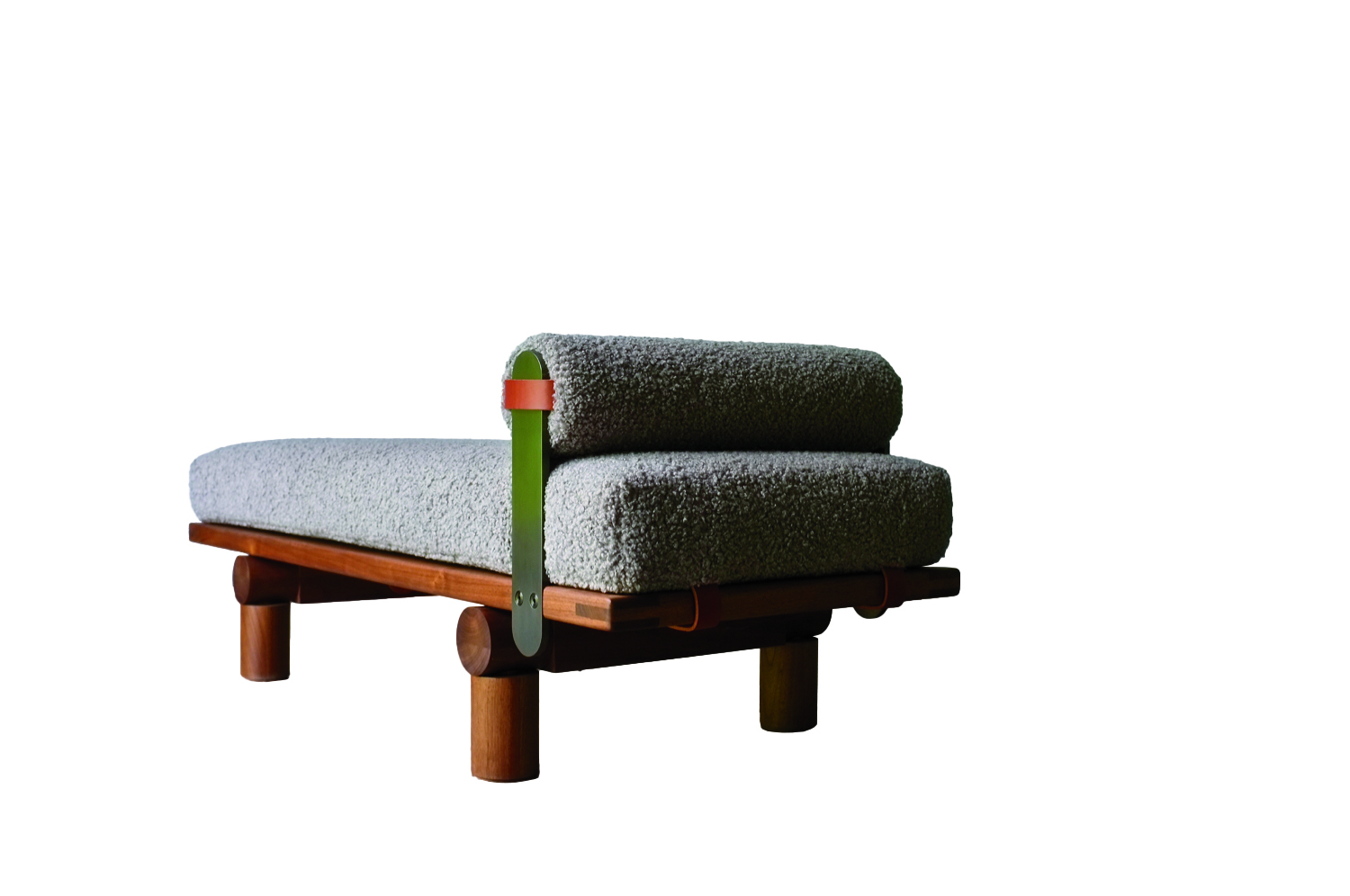 Plum, Michael Robbins
Plum, Michael Robbins
Woodworker Michael Robbins is the quintessential artisan from New York State’s Hudson Valley in that both his materials and methods pay homage to the area. In fact, he describes his style as “honest, playful, elegant and reflective of the aesthetic of the Hudson Valley surroundings”. Robbins crafts his furniture by hand but allows the wood he uses to help guide the look of a piece. (The studio offers eight standard finishes.) The Plum daybed, brought to life at Robbins’s workshop, exhibits his signature modern rusticity injected with a hint of whimsy thanks to the simplicity of its geometric forms. Around $4,275; MichaelRobbins.com
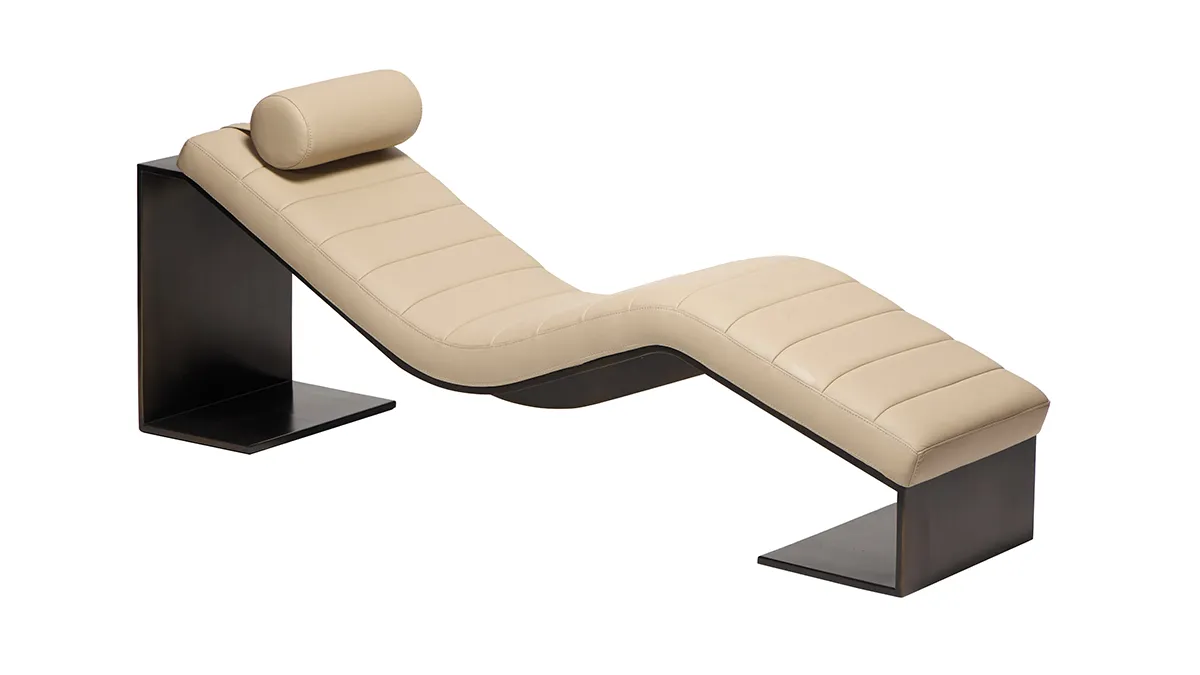
Kimani, Reda Amalou Design
French architect and designer Reda Amalou acknowledges the challenge of creating standout seating given the number of iconic 20th-century examples already in existence. Still, he persists—and prevails. The Kimani, a bent slash of a daybed in a limited edition of eight pieces, makes a forceful statement. Its leather cushion features a rolled headrest and rhythmic channel stitching reminiscent of that found on the seats of ’70s cars; visually, these elements anchor the slender silhouette atop a patinated bronze base with a sure-handed single line. The result: a seamless contour for the body. Around $33,530; RedaAmalou
Dune, Workshop/APD
From a firm known for crafting subtle but luxurious architecture and interiors, Workshop/APD’s debut furniture collection is on point. Among its offerings is the leather-wrapped Dune daybed. With classical and Art Deco influences, its cylindrical bolsters are a tactile celebration, and the peek of the curved satin-brass base makes for a sensual surprise. Associate principal Andrew Kline notes that the daybed adeptly bridges two seating areas in a roomy living space or can sit, bench-style, at the foot of a bed. From $13,040; Workshop/ APD
Sherazade, Edra
Designed by Francesco Binfaré, this sculptural, minimalist daybed—inspired by the rugs used by Eastern civilizations—allows for complete relaxation. Strength combined with comfort is the name of the game here. The Sherazade’s structure is made from light but sturdy honeycomb wood, while next-gen Gellyfoam and synthetic wadding aid repose. True to Edra’s amorphous design codes, it can switch configurations depending on the user’s mood or needs; for example, the accompanying extra pillows—one rectangular and one cylinder shaped— interchange to become armrests or backrests. From $32,900; Edra
You may also like.
By Josh Bozin
24/07/2024
22/07/2024
Watches & Wonders 2024 Showcase: Hermès
We head to Geneva for the Watches & Wonders exhibition; a week-long horological blockbuster featuring the hottest new drops, and no shortage of hype.
With Watches & Wonders 2024 well and truly behind us, we review some of the novelties Hermès presented at this year’s event.
—
HERMÈS
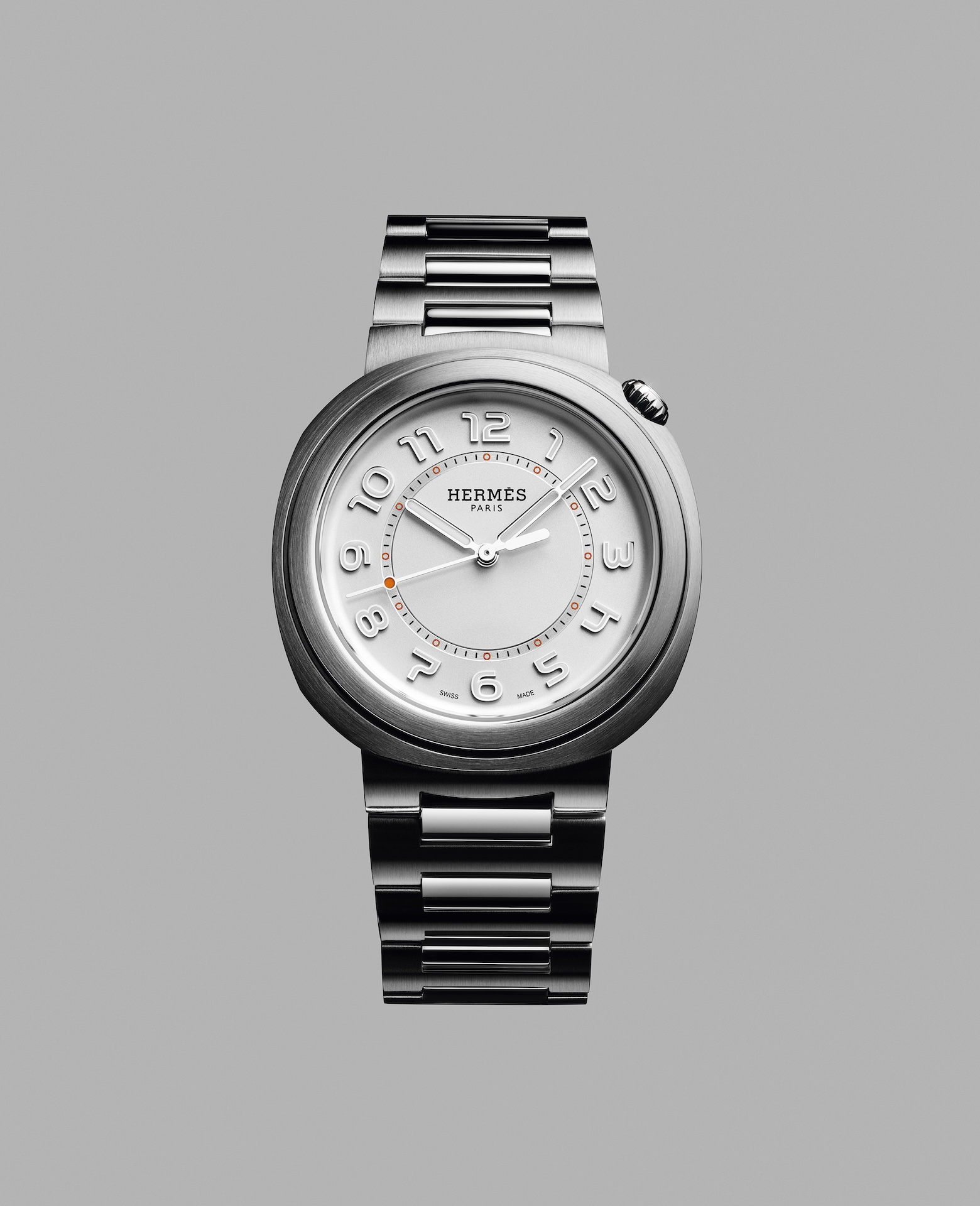
Moving away from the block colours and sporty aesthetic that has defined Hermès watches in recent years, the biggest news from the French luxury goods company at Watches & Wonders came with the unveiling of its newest collection, the Hermès Cut.
It flaunts a round bezel, but the case middle is nearer to a tonneau shape—a relatively simple design that, despite attracting flak from some watch aficionados, works. While marketed as a “women’s watch”, the Cut has universal appeal thanks to its elegant package and proportions. It moves away from the Maison’s penchant for a style-first product; it’s a watch that tells the time, not a fashion accessory with the ability to tell the time.
Hermès gets the proportions just right thanks to a satin-brushed and polished 36 mm case, PVD-treated Arabic numerals, and clean-cut edges that further accentuate its character. One of the key design elements is the positioning of the crown, boldly sitting at half-past one and embellished with a lacquered or engraved “H”, clearly stamping its originality. The watch is powered by a Hermès Manufacture movement H1912, revealed through its sapphire crystal caseback. In addition to its seamlessly integrated and easy-wearing metal bracelet, the Cut also comes with the option for a range of coloured rubber straps. Together with its clever interchangeable system, it’s a cinch to swap out its look.
It will be interesting to see how the Hermès Cut fares in coming months, particularly as it tries to establish its own identity separate from the more aggressive, but widely popular, Ho8 collection. Either way, the company is now a serious part of the dialogue around the concept of time.
—
Read more about this year’s Watches & Wonders exhibition at robbreport.com.au
You may also like.
22/07/2024
Living La Vida Lagerfeld
The world remembers him for fashion. But as a new tome reveals, the iconoclastic designer is defined as much by extravagant, often fantastical, homes as he is clothes.
“Lives, like novels, are made up of chapters”, the world-renowned bibliophile, Karl Lagerfeld, once observed.
Were a psychological-style novel ever to be written about Karl Lagerfeld’s life, it would no doubt give less narrative weight to the story of his reinvigoration of staid fashion houses like Chloe, Fendi and Chanel than to the underpinning leitmotif of the designer’s constant reinvention of himself.
In a lifetime spanning two centuries, Lagerfeld made and dropped an ever-changing parade of close friends, muses, collaborators and ambiguous lovers, as easily as he changed his clothes, his furniture… even his body. Each chapter of this book would be set against the backdrop of one of his series of apartments, houses and villas, whose often wildly divergent but always ultra-luxurious décor reflected the ever-evolving personas of this compulsively public but ultimately enigmatic man.
With the publication of Karl Lagerfeld: A Life in Houses these wildly disparate but always exquisite interiors are presented for the first time together as a chronological body of work. The book indeed serves as a kind of visual novel, documenting the domestic dreamscapes in which the iconic designer played out his many lives, while also making a strong case that Lagerfeld’s impact on contemporary interior design is just as important, if not more so, than his influence on fashion.
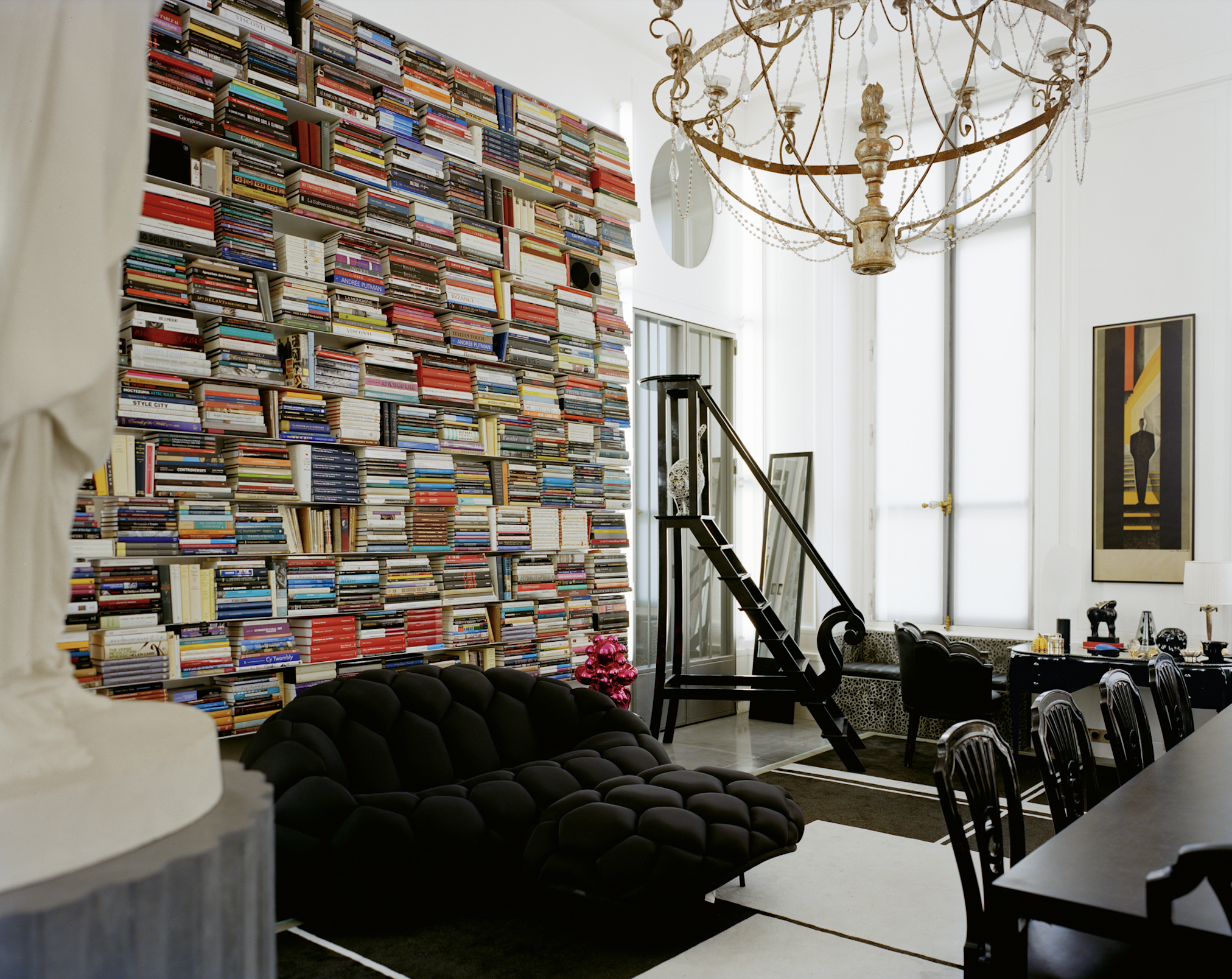
In fact, when the first Lagerfeld interior was featured in a 1968 spread for L’OEil magazine, the editorial describes him merely as a “stylist”. The photographs of the apartment in an 18th-century mansion on rue de Université, show walls lined with plum-coloured rice paper, or lacquered deepest chocolate brown in sharp contrast to crisp, white low ceilings that accentuated the horizontality that was fashionable among the extremely fashionable at the time. Yet amid this setting of aggressively au courant modernism, the anachronistic pops of Art Nouveau and Art Deco objects foreshadow the young Karl’s innate gift for creating strikingly original environments whose harmony is achieved through the deft interplay of contrasting styles and contexts.
Lagerfeld learned early on that presenting himself in a succession of gem-like domestic settings was good for crafting his image. But Lagerfeld’s houses not only provided him with publicity, they also gave him an excuse to indulge in his greatest passion. Shopping!
By 1973, Lagerfeld was living in a new apartment at Place Saint–Sulpice where his acquisition of important Art Deco treasures continued unabated. Now a bearded and muscular disco dandy, he could most often be found in the louche company of the models, starlets and assorted hedonistic beauties that gathered around the flamboyant fashion illustrator Antonio Lopez. Lagerfeld was also in the throes of a hopeless love affair with Jacques de Bascher whose favours he reluctantly shared with his nemesis Yves Saint Laurent.
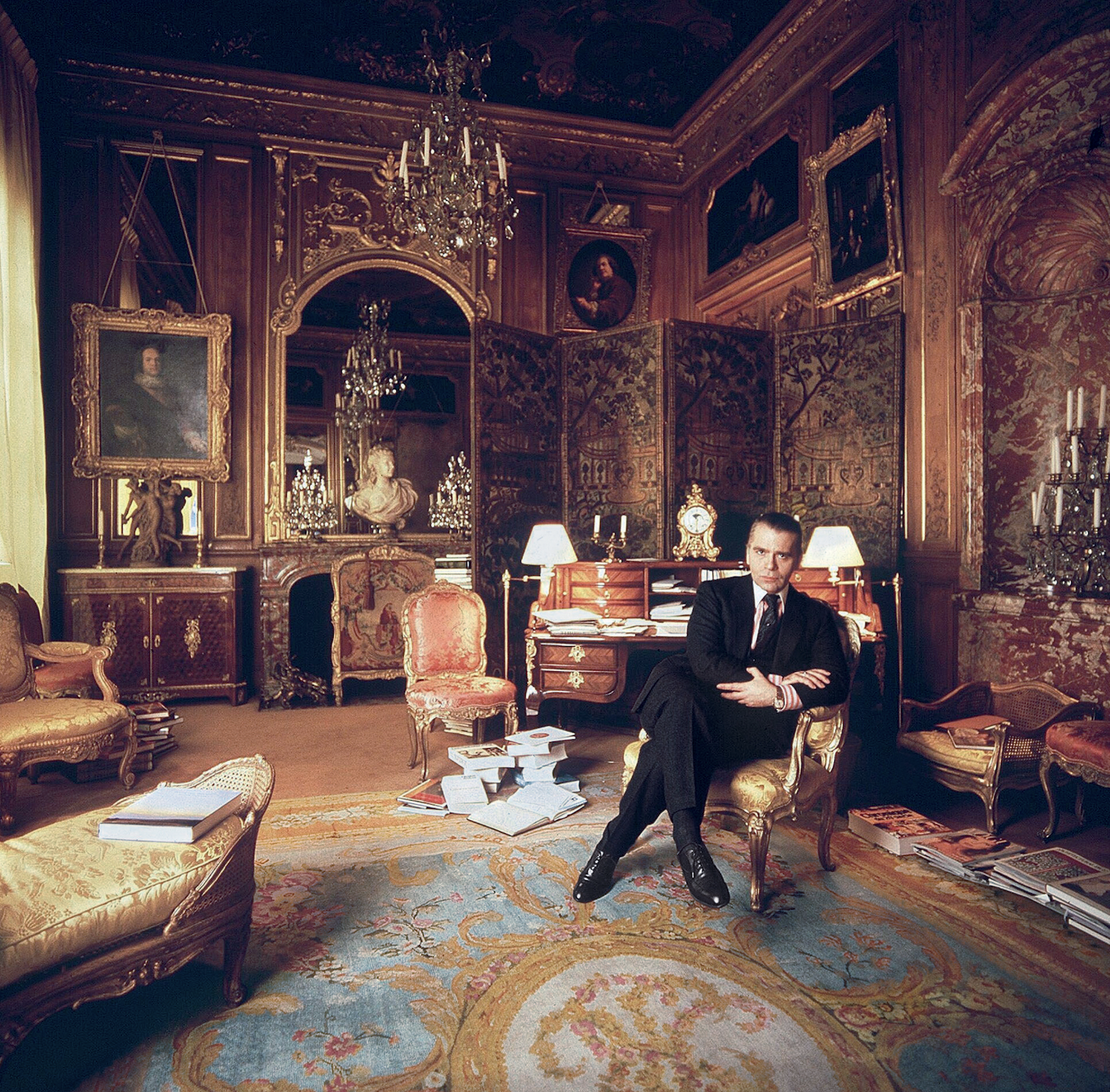
He painted the rooms milky white and lined them with specially commissioned carpets—the tawny patterned striations of which invoked musky wild animal pelts. These lent a stark relief to the sleek, machine-age chrome lines of his Deco furnishings. To contemporary eyes it remains a strikingly original arrangement that subtly conveys the tensions at play in Lagerfeld’s own life: the cocaine fuelled orgies of his lover and friends, hosted in the pristine home of a man who claimed that “a bed is for one person”.
In 1975, a painful falling out with his beloved Jacques, who was descending into the abyss of addiction, saw almost his entire collection of peerless Art Deco furniture, paintings and objects put under the auctioneer’s hammer. This was the first of many auction sales, as he habitually shed the contents of his houses along with whatever incarnation of himself had lived there. Lagerfeld was dispassionate about parting with these precious goods. “It’s collecting that’s fun, not owning,” he said. And the reality for a collector on such a Renaissance scale, is that to continue buying, Lagerfeld had to sell.
Of all his residences, it was the 1977 purchase of Hôtel Pozzo di Borgo, a grand and beautifully preserved 18th-century house, that would finally allow him to fulfill his childhood fantasies of life in the court of Madame de Pompadour. And it was in this aura of Rococó splendour that the fashion designer began to affect, along with his tailored three-piece suits, a courtier’s ponytailed and powdered coif and a coquettish antique fan: marking the beginning of his transformation into a living, breathing global brand that even those with little interest in fashion would immediately recognise.
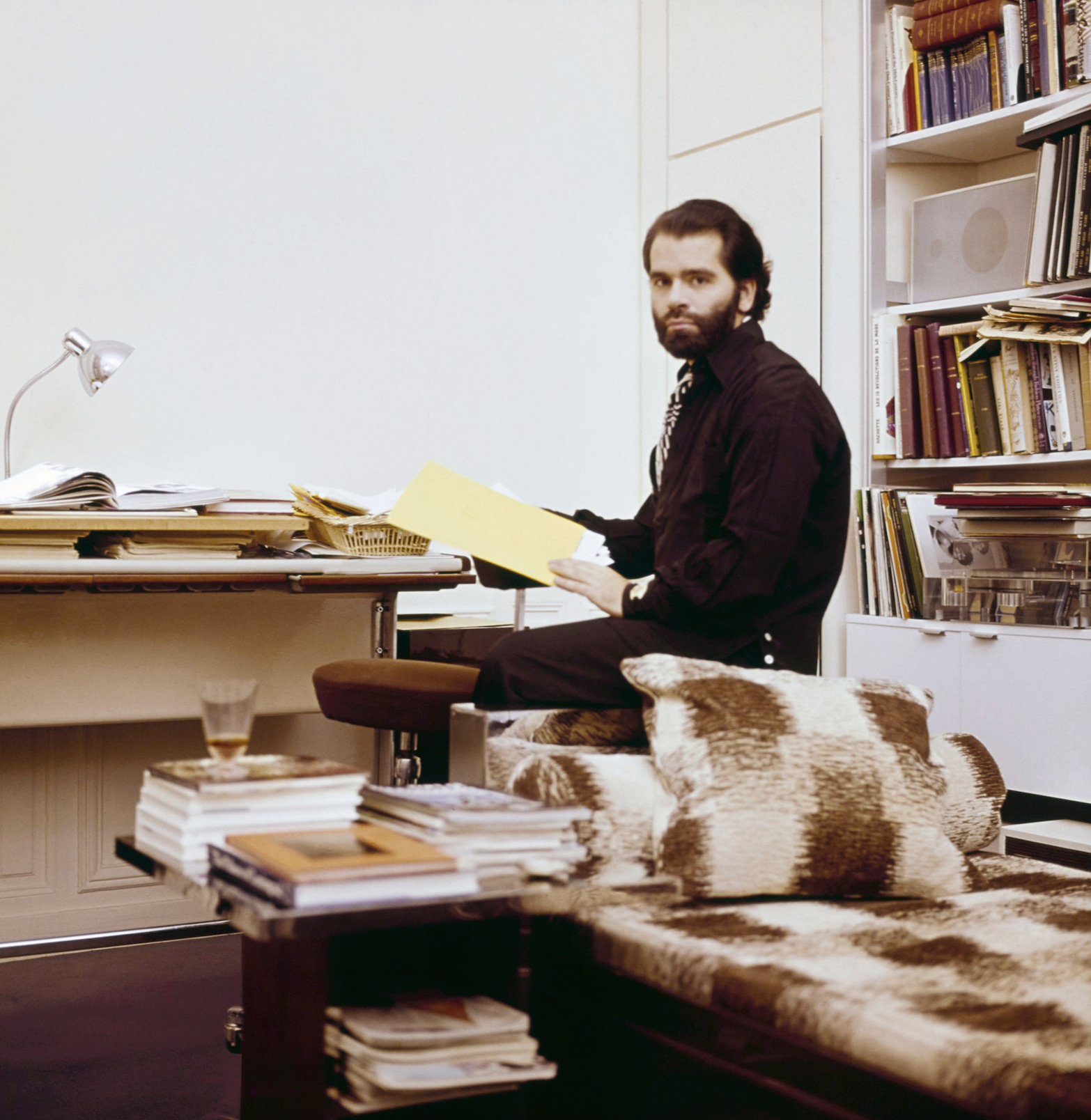
Lagerfeld’s increasing fame and financial success allowed him to indulge in an unprecedented spending frenzy, competing with deep-pocketed institutions like the Louvre to acquire the finest, most pedigreed pearls of the era—voluptuously carved and gilded bergères; ormolu chests; and fleshy, pastel-tinged Fragonard idylls—to adorn his urban palace. His one-time friend André Leon Talley described him in a contemporary article as suffering from “Versailles complex”.
However, in mid-1981, and in response to the election of left-wing president, François Mitterrand, Lagerfeld, with the assistance of his close friend Princess Caroline, became a resident of the tax haven of Monaco. He purchased two apartments on the 21st floor of Le Roccabella, a luxury residential block designed by Gio Ponti. One, in which he kept Jacques de Bascher, with whom he was now reconciled, was decorated in the strict, monochromatic Viennese Secessionist style that had long underpinned his aesthetic vocabulary; the other space, though, was something else entirely, cementing his notoriety as an iconoclastic tastemaker.
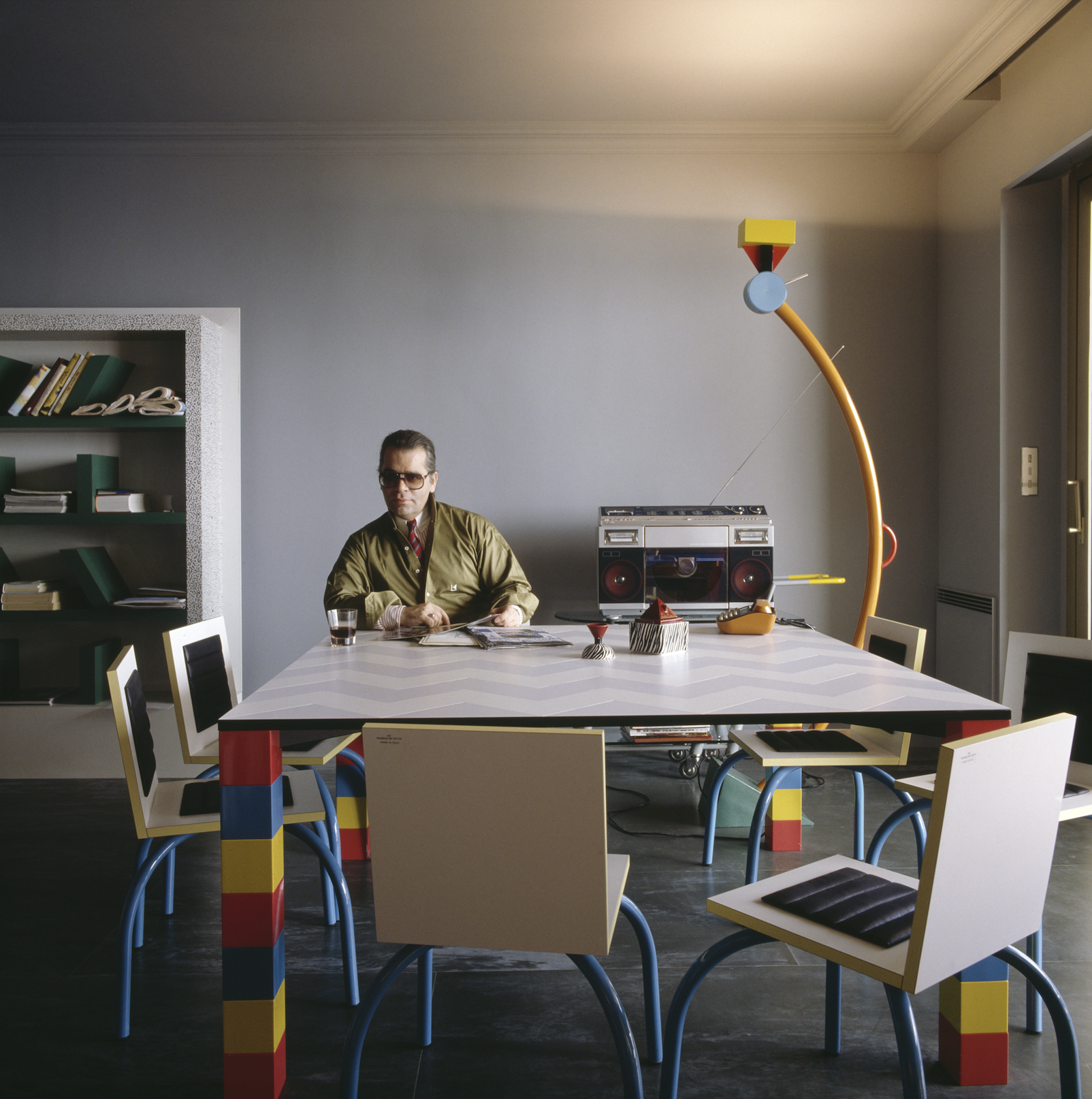
Lagerfeld had recently discovered the radically quirky designs of the Memphis Group led by Ettore Sottsass, and bought the collective’s entire first collection and had it shipped to Monaco. In a space with no right angles, these chaotically colourful, geometrically askew pieces—centred on Masanori Umeda’s famous boxing ring—gave visitors the disorientating sensation of having entered a corporeal comic strip. By 1991, the novelty of this jarring postmodern playhouse had inevitably worn thin and once again he sent it all to auction, later telling a journalist that “after a few years it was like living in an old Courrèges. Ha!”

In 1989, de Bascher died of an AIDS-related illness, and while Lagerfeld’s career continued to flourish, emotionally the famously stoic designer was struggling. In 2000, a somewhat corpulent Lagerfeld officially ended his “let them eat cake” years at the Hôtel Pozzo di Borgo, selling its sumptuous antique fittings in a massive headline auction that stretched over three days. As always there were other houses, but now with his longtime companion dead, and his celebrity metastasising making him a target for the paparazzi, he began to look less for exhibition spaces and more for private sanctuaries where he could pursue his endless, often lonely, work.
His next significant house was Villa Jako, named for his lost companion and built in the 1920s in a nouveau riche area of Hamburg close to where he grew up. Lagerfeld shot the advertising campaign for Lagerfeld Jako there—a fragrance created in memorial to de Bascher. The house featured a collection of mainly Scandinavian antiques, marking the aesthetic cusp between Art Nouveau and Art Deco. One of its rooms Lagerfeld decorated based on his remembrances of his childhood nursery. Here, he locked himself away to work—tellingly—on a series of illustrations for the fairy tale, The Emperor’s New Clothes. Villa Jako was a house of deep nostalgia and mourning.
But there were more acts—and more houses—to come in Lagerfeld’s life yet. In November 2000, upon seeing the attenuated tailoring of Hedi Slimane, then head of menswear at Christian Dior, the 135 kg Lagerfeld embarked on a strict dietary regime. Over the next 13 months, he melted into a shadow of his former self. It is this incarnation of Lagerfeld—high white starched collars; Slimane’s skintight suits, and fingerless leather gloves revealing hands bedecked with heavy silver rings—that is immediately recognisable some five years after his death.
The 200-year-old apartment in Quái Voltaire, Paris, was purchased in 2006, and after years of slumber Lagerfeld—a newly awakened Hip Van Winkle—was ready to remake it into his last modernist masterpiece. He designed a unique daylight simulation system that meant the monochromatic space was completely without shadows—and without memory. The walls were frosted and smoked glass, the floors concrete and silicone; and any hint of texture was banned with only shiny, sleek pieces by Marc Newson, Martin Szekely and the Bouroullec Brothers permitted. Few guests were allowed into this monastic environment where Lagerfeld worked, drank endless cans of Diet Coke and communed with Choupette, his beloved Birman cat, and parts of his collection of 300,000 books—one of the largest private collections in the world.
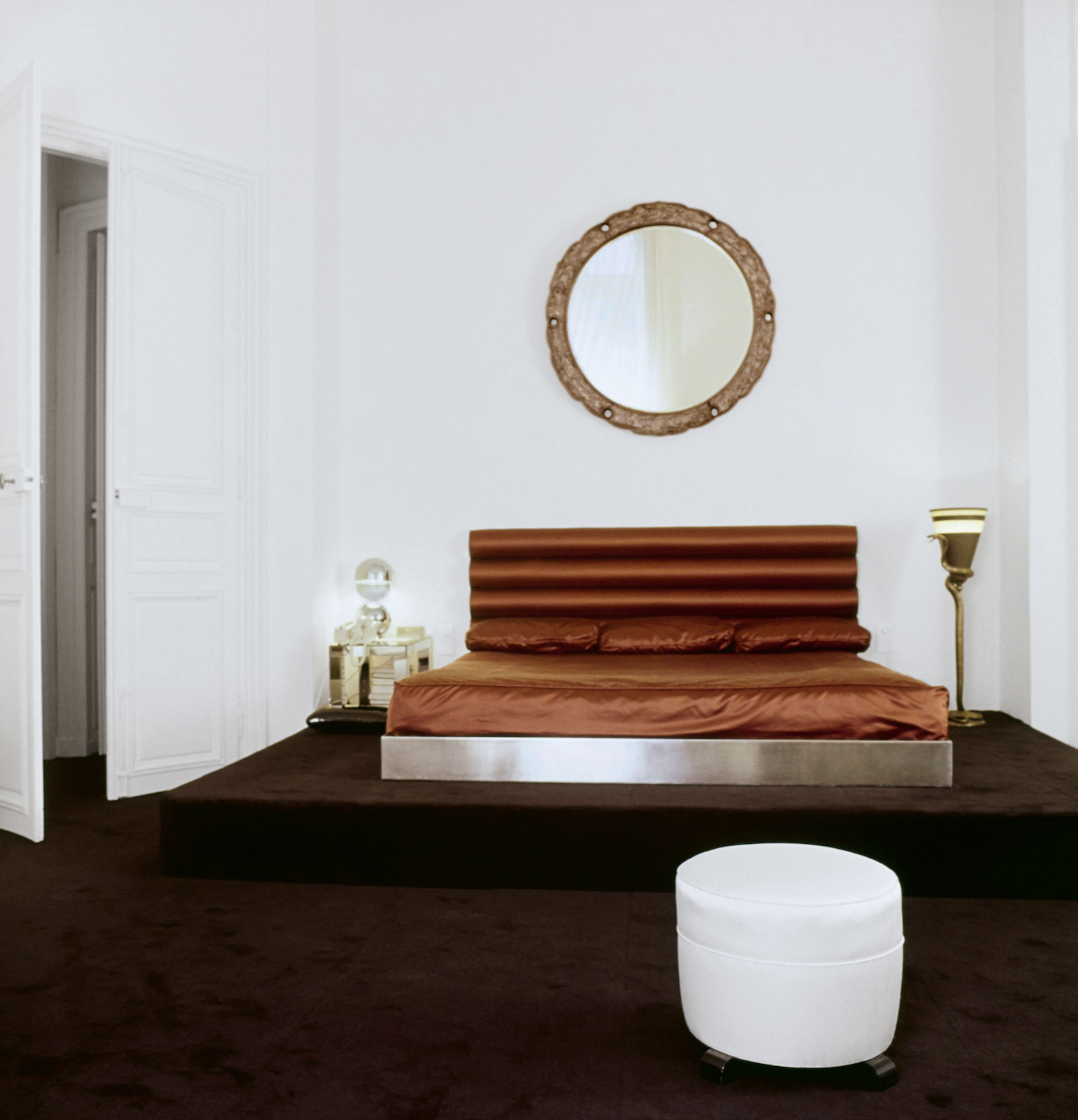
Lagerfeld died in 2019, and the process of dispersing his worldly goods is still ongoing. The Quái Voltaire apartment was sold this year for US$10.8 million (around $16.3 million). Now only the rue de Saint-Peres property remains within the Lagerfeld trust. Purchased after Quái Voltaire to further accommodate more of his books—35,000 were displayed in his studio alone, always stacked horizontally so he could read the titles without straining his neck—and as a place for food preparation as he loathed his primary living space having any trace of cooking smells. Today, the rue de Saint-Peres residence is open to the public as an arts performance space and most fittingly, a library.
You may also like.
By Josh Bozin
24/07/2024
Watch This Space: Mike Nouveau
Meet the game-changing horological influencers blazing a trail across social media—and doing things their own way.
In the thriving world of luxury watches, few people own a space that offers unfiltered digital amplification. And that’s precisely what makes the likes of Brynn Wallner, Teddy Baldassarre, Mike Nouveau and Justin Hast so compelling.
These thought-provoking digital crusaders are now paving the way for the story of watches to be told, and shown, in a new light. Speaking to thousands of followers on the daily—mainly via TikTok, Instagram and YouTube—these progressive commentators represent the new guard of watch pundits. And they’re swaying the opinions, and dollars, of the up-and-coming generations who now represent the target consumer of this booming sector.
—
MIKE NOUVEAU

Can we please see what’s on the wrist? That’s the question that catapulted Mike Nouveau into watch stardom, thanks to his penchant for highlighting incredibly rare timepieces across his TikTok account of more than 400,000 followers. When viewing Nouveau’s attention-grabbing video clips—usually shot in a New York City neighbourhood—it’s not uncommon to find him wrist-rolling some of the world’s rarest timepieces, like the million-dollar Cartier Cheich (a clip he posted in May).
But how did someone without any previous watch experience come to amass such a cult following, and in the process gain access to some of the world’s most coveted timepieces? Nouveau admits had been a collector for many years, but moved didn’t move into horology full-time until 2020, when he swapped his DJing career for one as a vintage watch specialist.
“I probably researched for a year before I even bought my first watch,” says Nouveau, alluding to his Rolex GMT Master “Pepsi” ref. 1675 from 1967, a lionised timepiece in the vintage cosmos. “I would see deals arise that I knew were very good, but they weren’t necessarily watches that I wanted to buy myself. I eventually started buying and selling, flipping just for fun because I knew how to spot a good deal.”
Nouveau claims that before launching his TikTok account in the wake of Covid-19, no one in the watch community knew he existed. “There really wasn’t much watch content, if any, on TikTok before I started posting, especially talking about vintage watches. There’s still not that many voices for vintage watches, period,” says Nouveau. “It just so happens that my audience probably skews younger, and I’d say there are just as many young people interested in vintage watches as there are in modern watches.”
View this post on Instagram
Nouveau recently posted a video to his TikTok account revealing that the average price of a watch purchased by Gen Z is now almost US$11,000 (around $16,500), with 41 percent of them coming into possession of a luxury watch in the past 12 months.
“Do as much independent research as you can [when buying],” he advises. “The more you do, the more informed you are and the less likely you are to make a mistake. And don’t bring modern watch expectations to the vintage world because it’s very different. People say, ‘buy the dealer’, but I don’t do that. I trust myself and myself only.”
—
Read more about the influencers shaking up horology here with Justin Hast, Brynn Wallner and Teddy Baldassare.
You may also like.
By Josh Bozin
24/07/2024
This Pristine 1960 Ferrari 250 Spider Could Fetch $24 Million at Auction
The car wears the same colours and has the same engine it left the factory with.
Some Ferraris are just a little bit more important than others.
Take, for example, the 1960 250 GT SWB California that RM Sotheby’s is auctioning off during this year’s Monterey Car Week. Any example of the open-top beauty would attract interest, but this one just so happens to be the first one that was built.
The 250 is one of the most legendary series of cars in Ferrari history. Between 1952 and 1964, the company released 21 different 250 models—seven for racetracks, 14 for public roads—of which the “Cali Spider” might be the most well regarded, thanks to its potent V-12 and a Pininfarina-penned design that is one of the most beautiful bodies to grace an automobile. The roadster, which was specifically built for the U.S., made its debut in 1957 as a long-wheel-base model (LWB), but it wasn’t until the SWB model debut in 1960 that it became clear how special it was. This example isn’t just the first to roll off the line. It’s the actual car that was used to introduce the world to the model at the 1960 Geneva Motor Show.
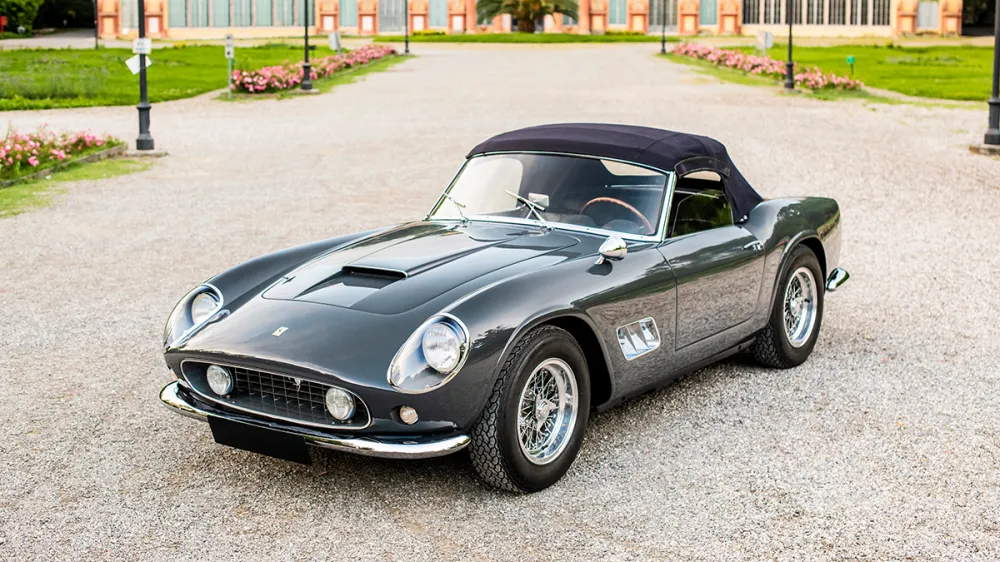
Just 56 examples of the 250 GT SWB California Spider would be built by Scaglietti during the three years it was in production. The first of those, chassis 1795 GT, is finished in a glossy coat of Grigio. The two-door had a red leather interior at Geneva but was returned to the factory and re-outfitted with black leather upholstery before being delivered to its original owner, British race car driver John Gordon Bennet. Six-and-a-half decades later the car looks identical to how it did when it left the factory the second time.
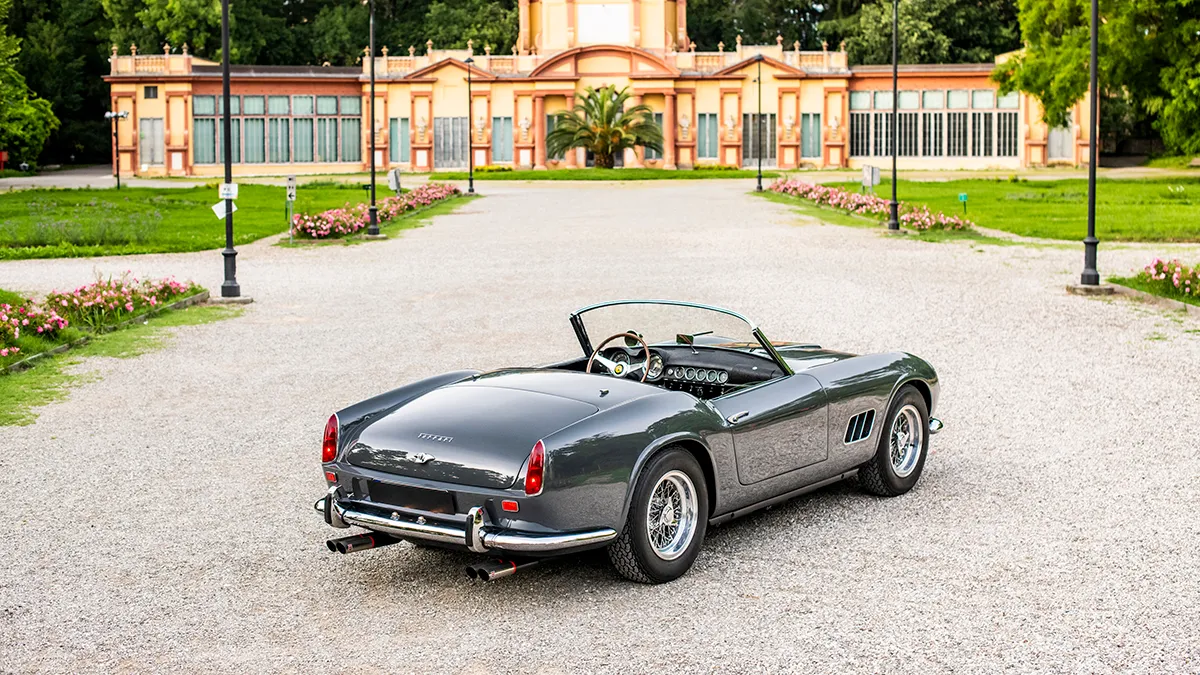
In addition to its original bodywork, the chassis 1795 GT features its original engine, gearbox, and rear axle. That mill is the competition-spec Tipo 168, a 3.0-litre V-12 that makes 196.1 kW. That may not sound like much by today’s standards, but, when you consider that the 250 GT SWB California Spider tips the scales around 952 kilograms, it’s more than enough.
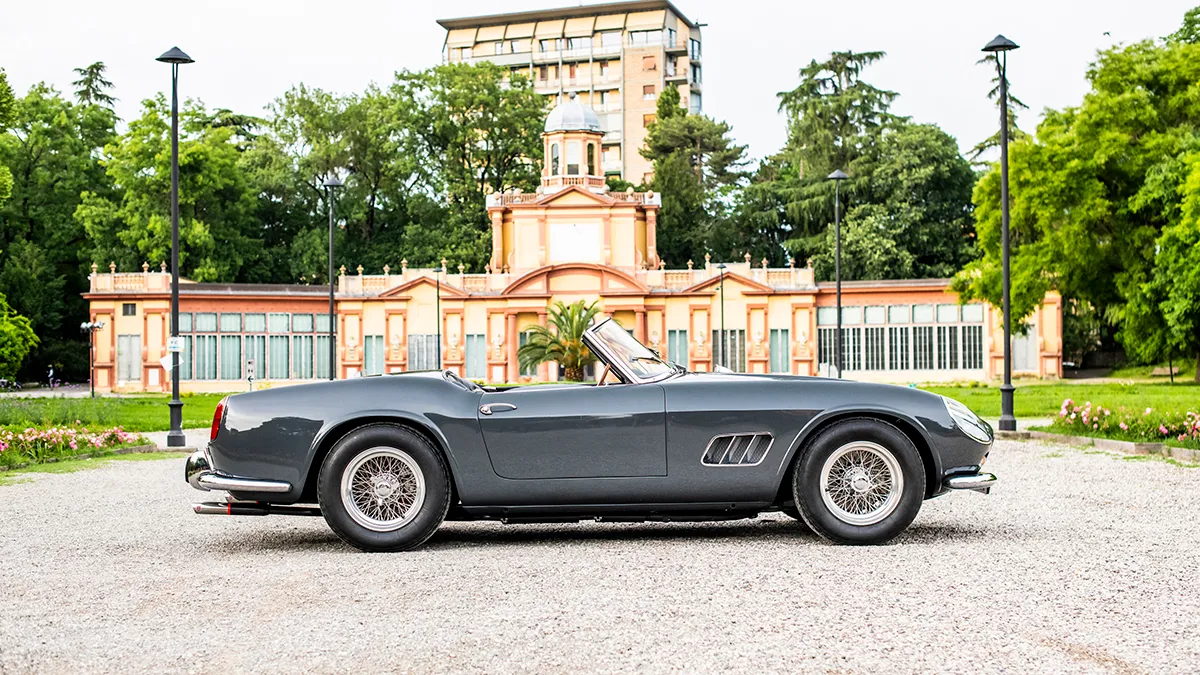
The first 250 GT SWB California Spider is scheduled to go up for bid during RM Sotheby’s annual Monterey Car Week auction, which runs from Thursday, August 15, to Saturday, August 17. Unsurprisingly, the house has quite high hopes for the car. The car carries an estimate of between $24 million and $26 million, which could make it one of the most expensive cars ever sold at auction.
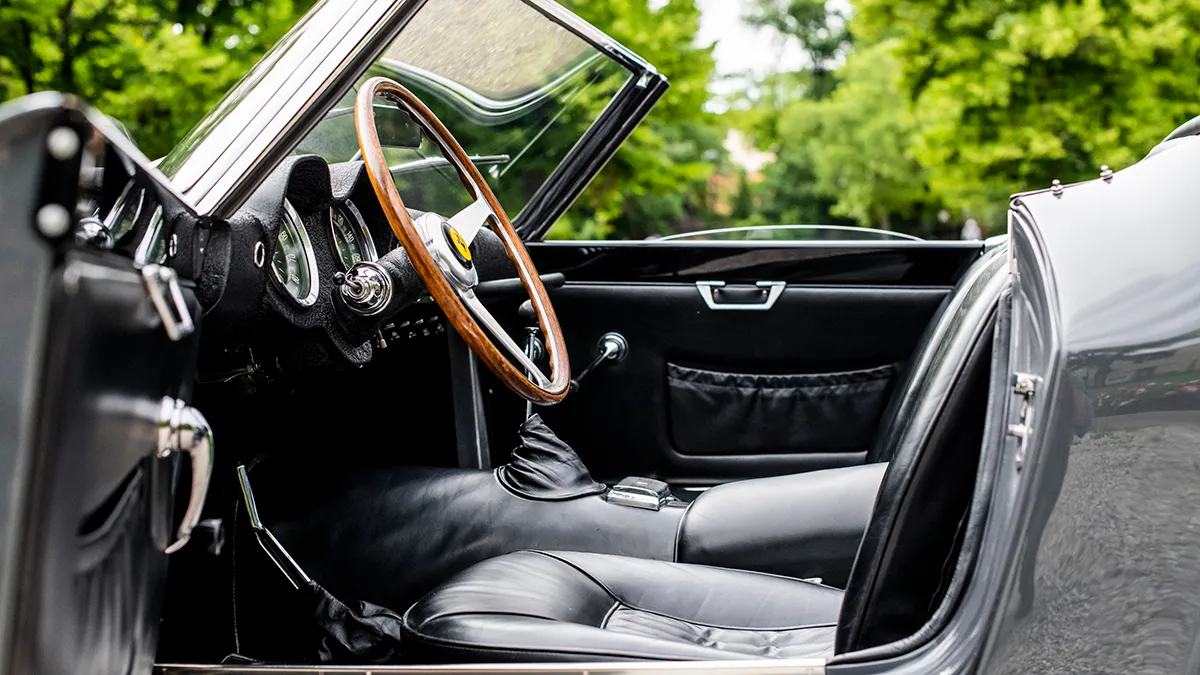
You may also like.
By Josh Bozin
24/07/2024






